Strawberries have a notoriously short shelf life. Once picked from the strawberry plants, they will only last a few days before the decay process begins in earnest. Because of this fact, and because so many people just love eating strawberries, multiple preservation methods have been developed to allow the enjoyment of the strawberry harvest long after it is over. This post is here to serve as your guide to freezing strawberries.
Before delving into how to freeze strawberries, it is important to mention a few bits of information. Freezing strawberries generally produces an end product that is far superior to canning them. Canning strawberries is a sufficient method of preservation. However, canned strawberries do not generally maintain the structural integrity of the berries. Consequently, canned strawberries are usually just mush at the time of use. Frozen strawberries, on the other hand, maintain most of their culinary qualities (depending on how much they are thawed when they are used).
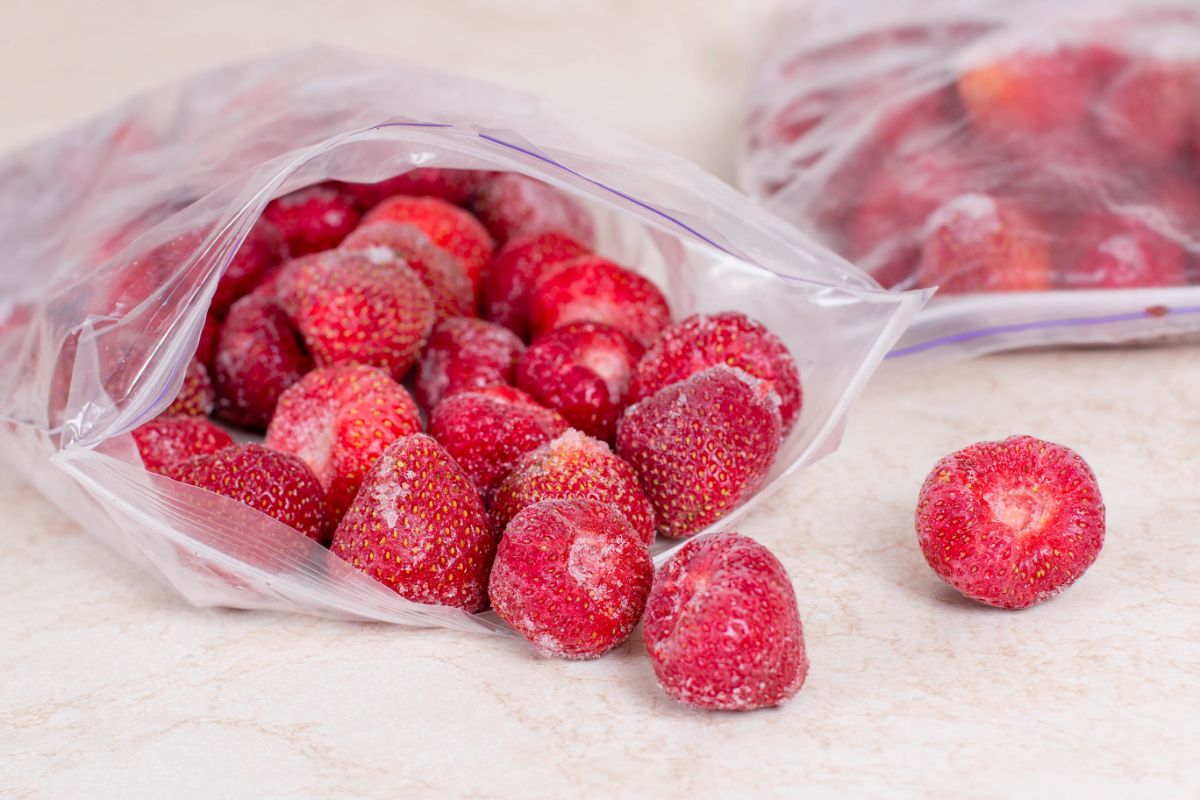
While freezing strawberries does not make them sterile, it does prevent bacteria and fungi from growing and causing the fruits to spoil. Frozen strawberries won’t keep forever, but they will remain usable long enough to make the freezing process worthwhile.
Jump to:
How the Freezing Strawberries Page Works
This main Freezing Strawberries page serves as a hub for everything related to learning how to freeze strawberries. The preliminaries of the strawberry freezing process are covered first. Then, instruction is provided regarding all of the common strawberry freezing methods. Additionally, technical information regarding the processes is also provided so that your strawberry freezing experience will be a resounding success! I recommend beginning at the top to understand the basics prior to initiating the freezing process using any of the specific methods (which are all listed and explained below). If you are a veteran strawberry freezer, feel free to jump directly to your desired method for guidance.
Disclosure: This article includes affiliate links, meaning I get a commission if you make a purchase through my links, at no extra cost to you. As an Amazon Associate I earn from qualifying purchases.
Freeze Strawberries: Preliminaries
Pick an Appropriate Strawberry Variety to Freeze
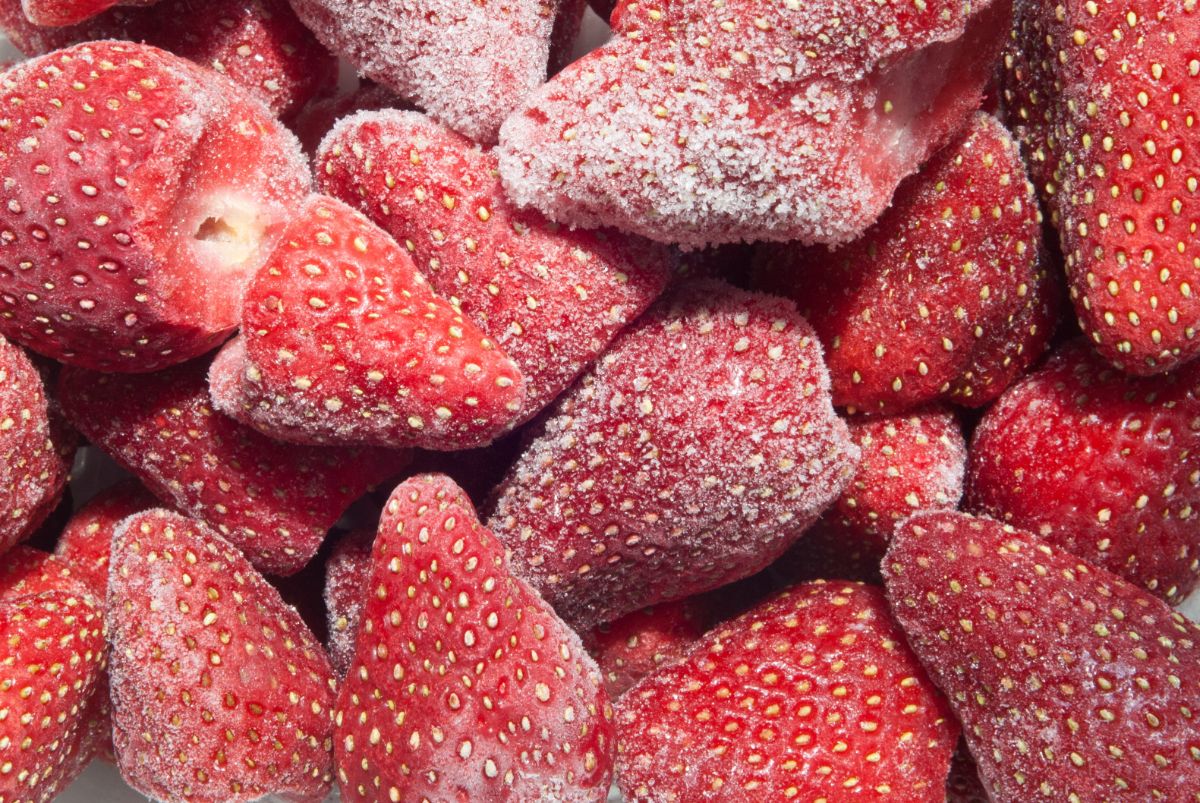
Different strawberry varieties have different properties. Some are firm, and some are soft. Some are exceedingly sweet, and some are quite tart. Some are gigantic, and some are miniscule. Which strawberries are best for freezing? When selecting a strawberry variety to freeze, the best ones for this preservation method are those that produce firm red strawberries that have a slightly tart flavor. And, of course, always pick fully ripe strawberries to freeze. Once picked, wash, sort, and de-cap them before processing them further. (Additional information on strawberry cultivars can be found on the Strawberry Varieties page)
How Many Strawberries Do You Need to Freeze?
It takes approximately 2/3 of a quart of freshly-picked strawberries to yield one pint of frozen strawberries. For more help with strawberry measurements, including metric equivalents, visit this post on strawberry conversions.
How to Freeze Strawberries: Options
There are actually quite a few options once you’ve decided to begin freezing strawberries. Generally, it is best to have an idea about how the frozen strawberries will be used prior to beginning. The intended use will guide the form in which the berries are frozen. Also, remember that frozen strawberries can be substituted for fresh ones in Strawberry Recipes, just remember that whole strawberries, when thawed, will have a texture that is quite a bit softer than that of fresh berries. To mitigate this effect, frozen strawberries are best used/served when a few ice crystals still cling to the fruit.
Strawberries can be frozen as a puree, crushed, sliced, or whole. When freezing strawberries that are large, a better result is obtained when the berries are crushed or sliced. Freezing in a sugar pack or syrup pack also increases the quality of the end product (the different methods are be detailed below) by producing both improved flavor and texture over unsweetened packs.
Strawberry Freezing Containers
The importance of choosing appropriate containers when freezing strawberries can’t be overestimated. When choosing a container, it is important to keep both moisture and air from passing through the walls of the container. Because of this, any paper or waxed-paper container (like juice or milk cartons) is unsuitable. Additionally, the storage container must be able to hold up under extremely cold temperatures. Ordinary glass jars will break quite easily. Freezer jars with tempered glass are able to resist breakage from hot and cold temperatures and can be used when freezing strawberries. A less-expensive and equally effective option is to use plastic freezer bags.
When using jars, a small amount of air is required between the top of the strawberries and the jar lid. This air is called “headspace” and allows for the slight expansion of the water in the strawberry pack so that the jar doesn’t break (even tempered jars can break if overfilled). Use the table below to ensure that enough space is left between the top of the jar’s contents and the lid:
Headspace Required Between the Packed Strawberries and the Lid When Freezing Strawberries

A Few Notes:
- Liquid packs are: strawberries packed in syrup, sugar, water, and juice or pureed or strawberry juice
- Exception to the above table: headspace for freezing strawberry juice should always be 1.5 inches, even in a pint container
- Dry packs are: strawberries that are tightly packed without any added liquids, sweeteners, or sugar
Freezing Strawberries: The Packing Methods
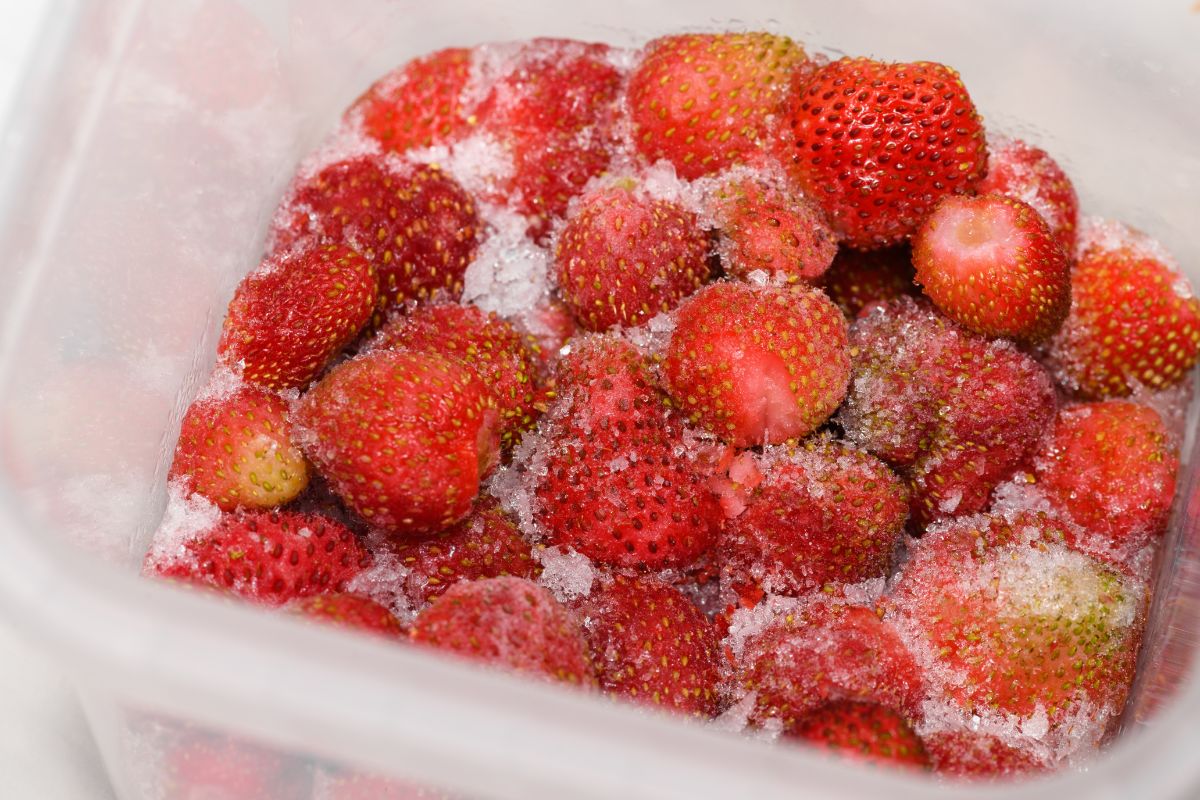
Freezing Whole Strawberries with a Syrup Pack
Freezing strawberries with a syrup pack requires that the syrup be made first. The syrup used is a very heavy one that is fifty percent sugar. To make it, simply dissolve four cups of sugar into four cups of warm water. Continue to stir the solution until it is clear and then chill it prior to using it. Prepare your strawberries by washing and drying and de-capping them. Then pack the strawberries into your chosen containers and leave the necessary headspace (see table above). Keep the strawberries from floating above the syrup by putting a crumpled up piece of wax paper or parchment paper on top of the fruit before sealing the containers. After everything is prepped, tightly seal the containers and put in the freezer to freeze.
Freezing Strawberries Whole with a Sugar Pack
Wash and de-cap your strawberries. For each quart of prepared fruit, sprinkle three-fourths cup of sugar and mix in gently with the strawberries. Most of the sugar will dissolve (or, you can let the strawberries sit for about fifteen minutes). Afterwards, pack the strawberries into your chosen containers. If you are packing them into jars, be sure to reference the table above to ensure you leave appropriate headspace for the jars you are using. Tighten the lids/seal your containers, and place the strawberries into the freezer to freeze.
Freezing Sliced Strawberries | Freezing Crushed Strawberries
Prepare the strawberries by washing, removing the green caps, and discarding any bad strawberries. Slice or crush the strawberries (berries can be crushed partially or completely). Sprinkle three-fourths of a cup of sugar over each quart of sliced strawberries or crushed strawberries and mix in the sugar well. Pack the resultant berry/sugar mix into appropriate containers. Be sure to reference the table above to ensure proper headspace. Seal up the containers and then freeze.
Freezing Strawberry Puree
Freezing strawberry puree begins the same way as every other method of freezing strawberries: with fresh, clean, de-capped strawberries. After initial prep work is complete, crush the strawberries and press them through a fine sieve. An alternative method is to put them in a food processor/blender and blend into a puree. Although not required, adding three-fourths of a cup of sugar to each quart of strawberry puree sweetens well. Be sure to stir each quart until the sugar is dissolved prior to transferring the puree to your freezer containers. Again, ensure appropriate headspace in your containers.
Freezing Strawberry Juice
To freeze strawberry juice, you need to crush your washed, cap-less fruit. Then, the crushed strawberries need to be placed in a jelly bag and strained. The resultant juice can be frozen as is, or three-fourths of a cup of sugar can be added to each quart to improve flavor. It is best to steer clear of freezer bags when freezing strawberry juice. Use rigid plastic or glass containers. No matter the container, always leave 1.5 inches of headspace for strawberry juice freezing. Put the sealed juice containers in the freezer and freeze.
Strawberry Freezing Using Unsweetened Dry Pack
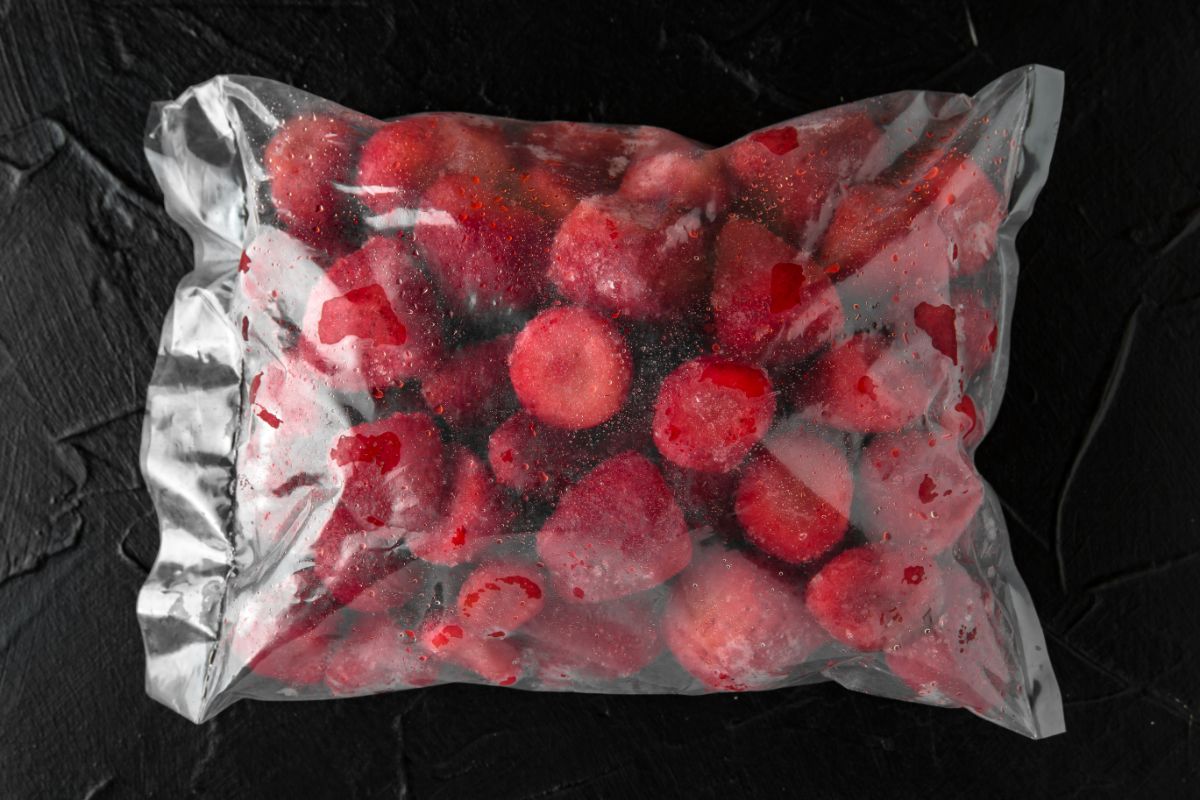
The unsweetened dry pack method of freezing strawberries is both easy and versatile and probably the most popular method. It works best for small-sized whole strawberries, but it also works well for sliced strawberries or berries that will later be used for strawberry jam. There are two basic forms of the unsweetened dry pack. The first method is to just pack washed and de-capped fruit into containers, seal the containers, and put them in the freezer.
The second method is great if you want to use the strawberries periodically and individually. It consists of two steps. First, obtain a cookie sheet or shallow tray and cover it with wax paper or parchment paper. Place the strawberries in rows on the paper with the point ends pointing up (do not stack the strawberries). Place the cookie sheet in the freezer and allow the berries to freeze until they are just hardened (leaving them in too long will cause them to have freeze burn). As soon as they are hardened, remove them from the freezer, quickly put them in freezer bags or other freezer containers and place them back in the freezer. By freezing the strawberries prior to packing them, they won’t be stuck together so tightly as to preclude the removal of individual berries. So, when you want a strawberry or two for a salad or garnish, you can simply remove the number you want and put the rest back in the freezer for later use.
Freezing Strawberries Using Other Unsweetened Packs
The unsweetened dry pack is not the only packing method that doesn’t use sugar or sweetener. Strawberries can be frozen after being packed in pectin syrup, juice (unsweetened), or even water. The downside of using unsweetened packing methods is that the final product has less appealing color qualities and will often be less textured and plump. Of the three just mentioned, however, pectin syrup will out-perform water or juice packs for retaining texture. For each of these packs, simply pack the strawberries in your chosen containers and then cover with juice, pectin, or water. Allow appropriate headspace (see above). In order to keep the strawberries submerged, a small piece of wax or parchment paper should be crumpled and placed under the lid on top of the berries. Place in the freezer after the containers are appropriately sealed.
To make pectin syrup, combine in a saucepan one cup of water and one package of powdered pectin. Bring to a boil and boil for one minute. Remove the saucepan from the heat source and add one and three-fourths (1.75) cups of water (more for a thinner syrup and less for a thicker syrup). Allow the mixture to cool. This will provide around three cups of a moderately thick pectin syrup.
Freezing Strawberries with Artificial Sweeteners
Artificial sweeteners can also be used to decrease the calories in frozen strawberries. To substitute an artificial sweetener for sugar, simply look at the conversion ratio that will be printed on the artificial sweetener’s box somewhere and substitute for sugar according to that ratio. The most common artificial sweeteners are Equal, Sweet-n-Low, and Splenda (aspartame, saccharine, and sucralose, respectively), but others such as xylitol and all-natural stevia are other options. Be aware, however, that the artificial sweeteners will only sweeten. They will not contribute any additional preservation effects like sugar will. They will also not protect color or provide the thickness that a sugar syrup will.
How to Freeze Strawberries
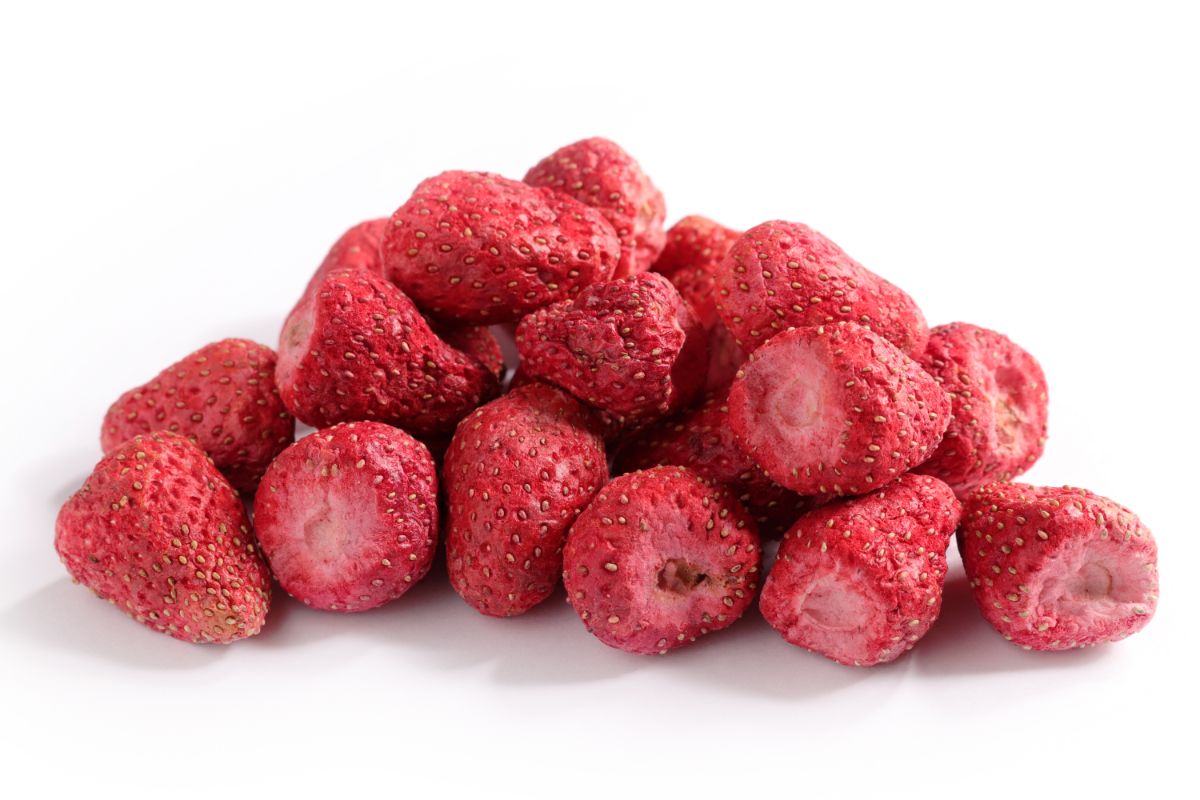
(This same process used for freezing strawberries can be used for freezing blueberries, freezing raspberries, or freezing just about any other kind of berry.)
1. How to Freeze Strawberries: First Things First
Before you can start freezing strawberries, you have to get them. Pick Your Own strawberry farms are a good place to get a large quantity of fresh strawberries during the growing season. Or, even better, you can grow strawberries yourself in your personal garden (see the Growing Strawberries page for help). You can also get them from farmers’ markets, supermarkets or grocery stores, and roadside stands.
2. Freezing Strawberries Requires Some Equipment
Gather the equipment you will need as you begin the process to freeze strawberries. You will need a colander or strainer, a knife or cap remover tool to remove the strawberry caps, zip-lock freezer bags (a vacuum sealer actually works better if you have one available to you), a large bowl, a lipped cookie sheet or shallow oven pan, and a freezer.
3. How to Freeze Strawberries: De-Cap Them
Take your knife or strawberry de-capping tool and carefully remove the green, leafy caps (also called hulls). Take care to leave all of the red berry while taking all the green leafy part.
4. How to Freeze Strawberries: Wash & Sort Them
Next, put the strawberries in the large bowl and fill it will cold water. Gently wash the floating strawberries and allow them to roll through your fingers. The mushy or rotten strawberries should be easy to detect. Remove them. Don’t let the strawberries soak in the water. As soon as they are washed, move on to the next step.
5. How to Freeze Strawberries: Drain in Colander
After thoroughly washing the berries in the cold water, all the bits of leaves, residual dust and dirt, and other debris should be liberated. At this point, gently pour the strawberries into the colander or strainer to drain. Give the strawberries one good rinse with cold water. After rinsing, allow them to sit for about ten minutes to remove as much of the excess water as possible.
6. How to Freeze Strawberries: Spread & Freeze
Once the strawberries are drained, it is time to spread them out and begin freezing strawberries in the freezer. Take your shallow pan or cookie sheet and spread the berries out one layer thick. Once spread, put them in the freezer. Freezing strawberries take a while, so leave them in until they are completely frozen. It is best to leave them in for 16 to 24 hours to ensure frozen strawberries.
7. How to Freeze Strawberries: Bag ‘Em!
Once frozen, remove the strawberries and put them into bags. You may have to break up some of them as strawberries freeze together if they are touching in the freezer. After you have them in the zip-lock bags, remove as much air as possible. A vacuum seal system is great here. If you don’t have a vacuum system, close the zip-lock bag almost all the way. Leave just enough room for a straw to be inserted. Suck as much air out through the straw as you can, then remove the straw and rapidly seal the bag. Label and date the bag. Voila, frozen strawberries bagged and ready to store in the deep freeze!
8. Freezing Strawberries: Conclusion
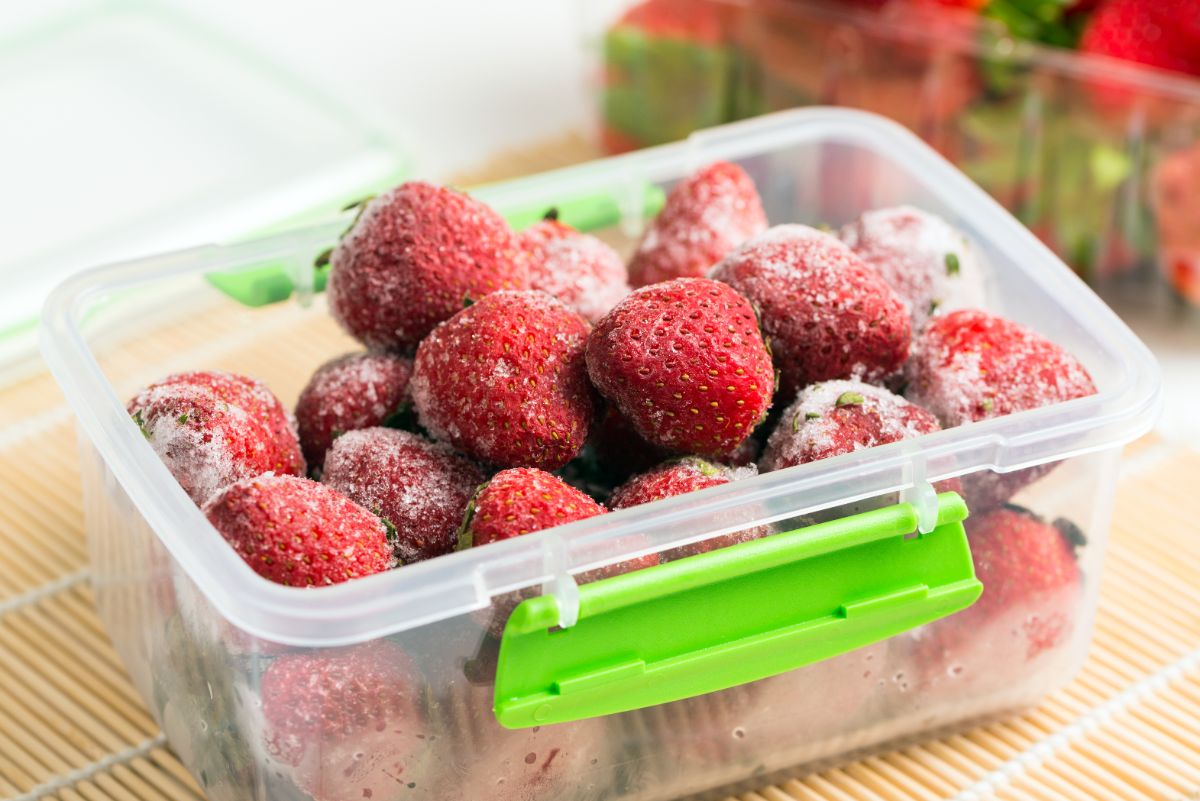
Freezing strawberries can save money and offer a source of tasty fruit during the cold winter months. Now that you know how to freeze strawberries, make use of the knowledge! When you are ready to eat or use the frozen strawberries, simply retrieve them from the freezer and thaw them. This can be done on the counter in a few hours or by leaving them in the refrigerator overnight. To sweeten the strawberries, sugar or syrup can be added during the freezing process. Enjoy, and bon appétit!
Freezing Strawberries: Tips & Conclusion
In order to have a successful experience while freezing your strawberries, a few tips are in order. Pay attention to these details, and you will be able to enjoy your strawberries long after the harvest!
1. Make sure your seals are clean. If you have crumbs or water on your seals, there can be air gaps that compromise the quality of your seals and frozen fruit.
2. Always make sure your containers have appropriate headspace so that some expansion can occur during freezing without damaging the containers. See the table above for guidance.
3. Do not use aluminum foil to keep strawberries submerged. Wax or parchment paper works just as well and will not disintegrate in the presence of the acidic strawberry pack like aluminum will.
4. Always label your containers with a permanent marker. Write the date of freezing, that the container holds strawberries, and the type of pack used.
5. Freeze as soon as possible. Strawberries should be frozen and stored at 0 degrees Fahrenheit (-18 degrees Celsius) or colder. To speed the freezing process, do not stack strawberry containers in the freezer and only freeze a maximum of three pounds of fresh strawberries for each cubic foot of freezer space. After a full day of freezing, the strawberries should be frozen and can be stacked at that time to maximize freezer space.
Whether you are planning on growing your own strawberries, buying them at the store, or picking your own strawberries, freezing them is a great way to preserve your harvest until you are ready to use it. The strawberries should maintain exceptional quality for the first year they are frozen if packed in sugar. The quality of non-sugar packs will begin deteriorating more rapidly, usually around eight months or so. Even though the strawberries will lose some of their appealing texture and quality, they should still be safe to eat after the high-quality time period has elapsed. So, pick some extra strawberries this year and save them for later by using one or more of the methods of freezing strawberries!










Joe Nersveen says
I like to LOOSELY freeze unsweetened strawberries for year-round smoothie making. The trick to freezing the free-floating berries is to follow your dry pack method of preparing them but then lay them out on a dark or old towel to DRY COMPLETELY. Then gently place them into the large zip freezer bags and freeze. Once frozen gently squeeze the bag of frozen berries, just to ensure they’re all free-floating in the bag, then return to the freezer for weeks or months until ready to use. Then you can just grab however many berries as you need without added sugar – and you also won’t need an ice-pick to break up a big block of berries. BTW I cut GIANT berries in half before freezing.
Mobin says
Hello Dear Mr. Strawberry
I need more help regarding processing Strawberry. I would be glad if you all other friends can help me to have a plan in a large scale for Strawberry shelf-time. i am looking forwarding seeing from you.
Sincerely
Mobin
Mr. Strawberry says
Mobin,
If you are looking to freeze or can strawberries, they can last for many months. If you are wondering how long they will last fresh in the refrigerator after picking, I wouldn’t plan on more than a week. Mold sets in quickly with the thin-skinned and soft strawberries! Good luck!
judy shores says
Can I use brown sugar when freezing sliced strawberries?
Mr. Strawberry says
judy shores,
Yes, but you may have slightly poorer results.
Angela says
Which is the best packing for strawberry syrup that needs to freeze?
Sara says
Hi there, great website- very helpful! Im going to be making a large quantity of strawberry syrup that will be frozen for a few months. Should i freeze the strawberries themselves and make the syrup when I’m ready to use it or should i make the syrup while the strawberries are fresh and then freeze the syrup? Whats better, syrup made from frozen berries or previously frozen berry syrup? Thanks so much!
Mr. Strawberry says
Sara,
Thanks for the kind words. I would go ahead and make the syrup and then freeze it. Just make sure to leave enough space in your containers so that they don’t break when the syrup has frozen. Good luck!